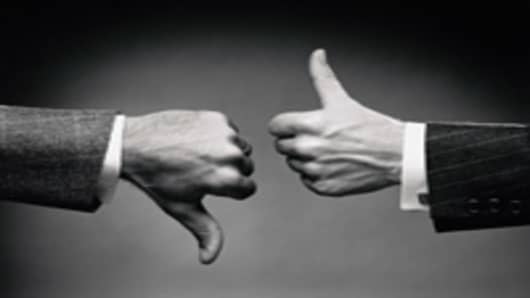Not all stock buybacks are created equal—or done for the right reasons.
In what may be the best report ever on stock buybacks, accounting and tax analyst David Zion had this sobering comment: After reviewing the $2.7 trillion in buybacks by the S&P 500 from 2004 through 2011, “it looks like most of the buybacks by the S&P 500 over the past eight years have not yet added much value for remaining shareholders.”
Which is unfortunate, because as Zion writes, “it seems like many investors and analysts assume that buybacks automatically add value, regardless of the price paid.”
What’s worse, buybacks are often done to offset earnings per share dilution from stock-based compensation plans or, worse, for the purpose of reducing share count just to push earnings per share higher. “Just because something is accretive to earnings doesn’t necessarily mean that it’s creating value for shareholders,” Zion writes. (Related: Biggest Stock Buybacks)
What’s an investor to do?
Zion says to think of buybacks as if they were stocks you were adding to your portfolio, asking this simple question: Are they cheap or expensive based on their intrinsic value, which requires some basic fundamental analysis.
But Zion also notes that it’s really little more than “old school common sense of corporate finance.”
Digging even deeper, a key element of this is whether the company paid above or below its cost of equity, which he defines as the theoretical return that investors expect to receive from holding a stock.
For purposes of this report, the cost of equity is 7 percent, which is slightly lower than the historic average of around 8 percent or 9 percent given interest rates and market volatility.
With 7 percent as the benchmark, only 180 companies or 36 percent of the S&P 500 are in the money since 2004, when the SEC first started requiring companies to provide detail on stock buybacks.
Leading the list of losers: American International Group, with a annualized loss of 51.7 percent; Citigroup, 33.9 percent; Sprint Nextel, 31.1 percent; Genworth Financial, 29 percent; Hartford Financial, 28.3 percent and Alcoa, 24.8 percent.
The winners: Dollar Tree, an annualized return of 34 percent; CF Industries, 32.6 percent; Visa, 32.4 percent; Ross Stores, 32.2 percent, Lorillard, 32.2 percent and Edwards Lifesciences, 27.6 percent.
And this note: The two biggest spenders are IBM ($90 billion) and Hewlett Packard ($61 billion.) Over the eight years of the study IBM post an annualized return of 15.3 percent while Hewlett Packard produced an annualized loss of 11.3 percent.
“The question for IBM is whether it continues to make sense to buy the stock at these levels, given its intrinsic value and other investment opportunities,” Zion says. Considering that it’s an integral lever in the company’s “road map” to a 2015 earnings per share target, investors had better hope it does.
Questions? Comments? Write to HerbOnTheStreet@cnbc.com
Follow Herb on Twitter: @herbgreenberg
Find Herb on Google+
Subscribe to Herb athttp://www.facebook.com/herb.greenberg



